Quite a while back now, I wrote a review of the original Fable, mostly based on the Anniversary version which released around the same time. I had also meant to review both Fable II and Fable III but never got around to either. Both of the latter titles are now only available on Xbox systems as the second game was never ported to PC and the third was removed from digital stores once support ended for Microsoft’s horrid Games for Windows Live service. The series ended with the Kinect-only Fable: The Journey and the canceled Fable Legends on Xbox One. Both of which departed (or at least would have), from the core design of the main series. There were also a few other forgettable spin-offs released here and there that were related mostly in name only.
The disappointing demise of Lionhead Studios didn’t mean the end for the series though and a new Fable is currently in development with British developer Playground Games — who are best known for the Forza Horizon racing series. A teaser trailer was released last year and it frankly looks horrible. Most notably, the ugly female protagonist suggests we’re also in for a lot of the typical identity politics and degeneracy. I should quickly add before someone writes “Actually…” that none of what I expect this game will focus on is necessarily inconsistent with the original series and I shall elaborate below.
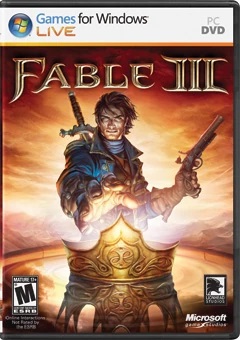
The main reason for writing this is not so much because of the upcoming reboot but because I recently completed a playthrough of Fable III for the first time since it released back in 2010. Like many, I was very disappointed with the game but I thought it would be worth taking a fresh look after well over a decade. I also replayed the PC release of Fable: The Lost Chapters a couple of years ago but that is less relevant here as my thoughts on this game are in the linked review above. So this will mostly (but not exclusively), looking at the third entry.
To start with, what I mentioned above, the series is really one of the few franchises that can be infused with identity politics and still remain somewhat consistent with its legacy. Going back to the original Fable for example, it is remarkable how much “representation” it had for a game from 2004. A major character named Whisper was a black woman, as was her father. The game only allowed a white male protagonist but he was able to “marry” men though I can’t say I tried it. The sequels furthered this by including female protagonists, more “diverse” NPCs and even the option for “same-sex couples” to adopt children in the third game. Most of the character models are also admittedly ugly like the new protagonist but in the case of these games, they were intentionally adopting a homely British artistic style whereas the new one appears to be aiming for visual realism. What is interesting in observing this is that I can’t recall anyone either complaining about or promoting these aspects though this is certainly anachronistic in a fantasy British setting. It should be added that this didn’t save them from the cancel mob when they posted a cheeky tweet with concept art from Fable II below back in 2015. The simple point is that there was little (if any), controversy about any of this sort of stuff between 2004 and 2010 regardless of your political persuasion.
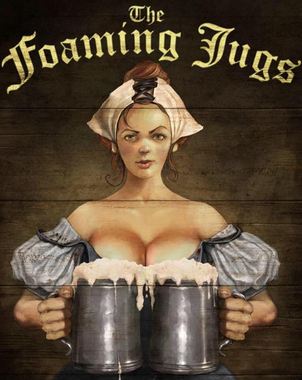
I think the main reason that nobody raised any objections (that I recall), was that the developers didn’t make a fuss about it and weren’t leaned on to do it by any external pressure. They decided to include what they did and players could ignore a great deal of it if they wanted or just not play the game at all. This seems hard to believe today but that’s the way things were not twenty years ago. As for what to expect going forward, you can bet that whatever Playground is making is going to dial all this up to eleven and I expect at the very least, we’ll have trannies and sodomy flags introduced to the world of Albion. I expect that the crass humour from the original games will be dialed down quite a bit too.
Now coming to Fable III, I would say that not only have I not changed my opinion since I last played it but that I probably disliked it even more. It isn’t so bad that I didn’t enjoy aspects of it, but it still deserves the generally negative reputation it has. The main problem that jumped out at me was how obviously unfinished it is and how frequently the game’s narrative is suddenly lurched forward. This is somewhat true at moments of the previous two but much more so in Fable III. The game was released just two years after Fable II on the same engine with similar bugs and even recycled game assets and environments though it was set in a later time period.
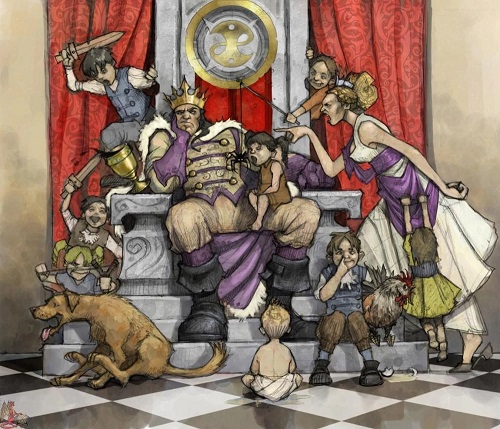
The changes made and new features introduced are mostly for the worse. The cumbersome menus of the previous games have somehow been made more so as the player character now has to navigate rooms in a pause menu to access equipment, quests and even the menu to exit the game in the PC version. Both Fable and Fable II could have the absurd situations where almost every NPC in towns follows you around with giant love hearts above their head. Fable III introduces “Relationship Quests” which goes to the opposite extreme of dragging the process out. So where previously a character would like you based on reputation or the series of canned actions you performed, you can only make “friends” in Fable III by delivering parcels or digging up lost items and often in different regions of the world which quickly becomes tedious. Almost all the main quests and most of the side quests are just variations or running through areas fighting clusters of enemies which is not so different to the previous two games. But this is the third game and I do recall the quests of the first two being more varied than what is on offer here.
The most touted feature of Fable III comes in the last third or quarter of the main quest where your character is made the king or queen of Albion and able to make decisions affecting the kingdom. Most of these offer the typically shallow extremes of good and evil. Examples include choosing whether to put children to work in a factory or send them to school and the choice between improving an orphanage or closing it and turning the building into a brothel. The necessity of choosing between these often ridiculous extremes is due to an impending attack on Albion which requires the king to raise a war chest in kingdom’s defence. There are also a series of promises made to various people and groups through the game that can be kept or broken for the same reason. Not all of these decisions are directly related to this but they are consistent with the binary choices offered in the last games. This portion of the game is set over a year but the times between decisions move forward erratically and in the Xbox 360 version, an unsuspecting player can be thrust straight into the end-game without warning. So the only difference between this feature and the previous games is that is done in a throne room. There are also some further quests that require the king himself to go alone which would more realistically be delegated to someone else. Unlike in the more dedicated simulation games, you never really feel like you’re in charge of anything.
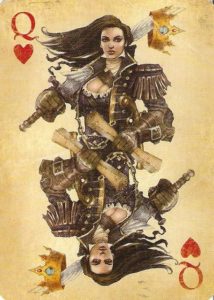
The necessity for taking the evil extremes are ultimately irrelevant as you can quickly amass a fortune by buying various properties around Albion and renting them out at a high rate. As the money pours in, you quickly reinvest buying more properties and you can soon own virtually every property in the kingdom. This is helped even further in the latter portion of the game as you can raid the treasury for more investment funds. Once done, you will continue to accumulate wealth and only occasionally have to repair a property to keep the money flowing. Your tenants won’t fail to pay the rent, leave or revolt due to your outrageous rates. All that happens is they might grumble at you as you walk by them in the street. Do this and you amass more than enough to meet the set requirements and without any consequences. There is no real point to going the evil route then unless you want to see what happens which amounts to grumbling from certain characters and some superficial changes to affected regions.
In observing how ridiculous the way the economy works, I remembered that this isn’t exclusive problem of the third but was present in the second as well. What is probably most disappointing about the third game is how little it did to build on the previous games and in some cases made things worse. As mentioned, the character relationships are still all done through shallow canned expressions and most of this is irrelevant to the main quest. Whether the NPC characters praise you, grumble at you or flee in fear has no real affect on the game’s narrative. There are some concrete consequences in the games but these just change the way certain areas or your character looks and nowhere near as impactful as other contemporary games such as Mass Effect and The Witcher. The simulation features are as shallow as the previous games and can almost totally be ignored in completing the main quest. The series has always presented a variety of things the player can do but almost all of this is shallow and contrary to the claims of the original’s tagline; are mostly consequence free.
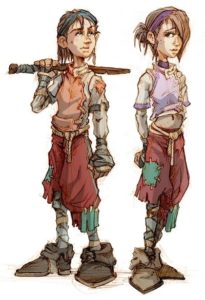
Peter Molyneux’s previous games were mostly PC simulation games such as Populous, Dungeon Keeper and Black & White and not the action/adventure genre that mostly describes the Fable series. I think the reason why the series has such an unlikely mixture or people who love or hate it is because it is a shallow hybrid of both action/adventure and simulation. The mechanics aren’t deep for either but if you come to the game looking for an action/adventure title than the simulation features feel unique. To anyone used to more sophisticated simulation games, these features are limited to the point of useless. Even something with the more mainstream appeal of The Sims, has far more sophisticated mechanics and lasting consequences for certain actions than any games in the Fable series.
As I mentioned in the review, the main appeal of the Fable series more so than the hybrid simulation/adventure is in the presentation. All three games have a unique art design and beautiful soundtracks. They developers spent good money on British voice talent including Stephen Fry, Simon Pegg, John Cleese, Ben Kingsley and Bernard Hill. And those are mostly just for Fable III. Then there is the general silliness and humour of the games which is hard to replicate. I think these games will always be considered flawed but fun games for their time but I don’t see the series having the lasting legacy of Molyneux’s other games. As for the upcoming reboot, I’d be very surprised if it was anything but an expensive disaster.
